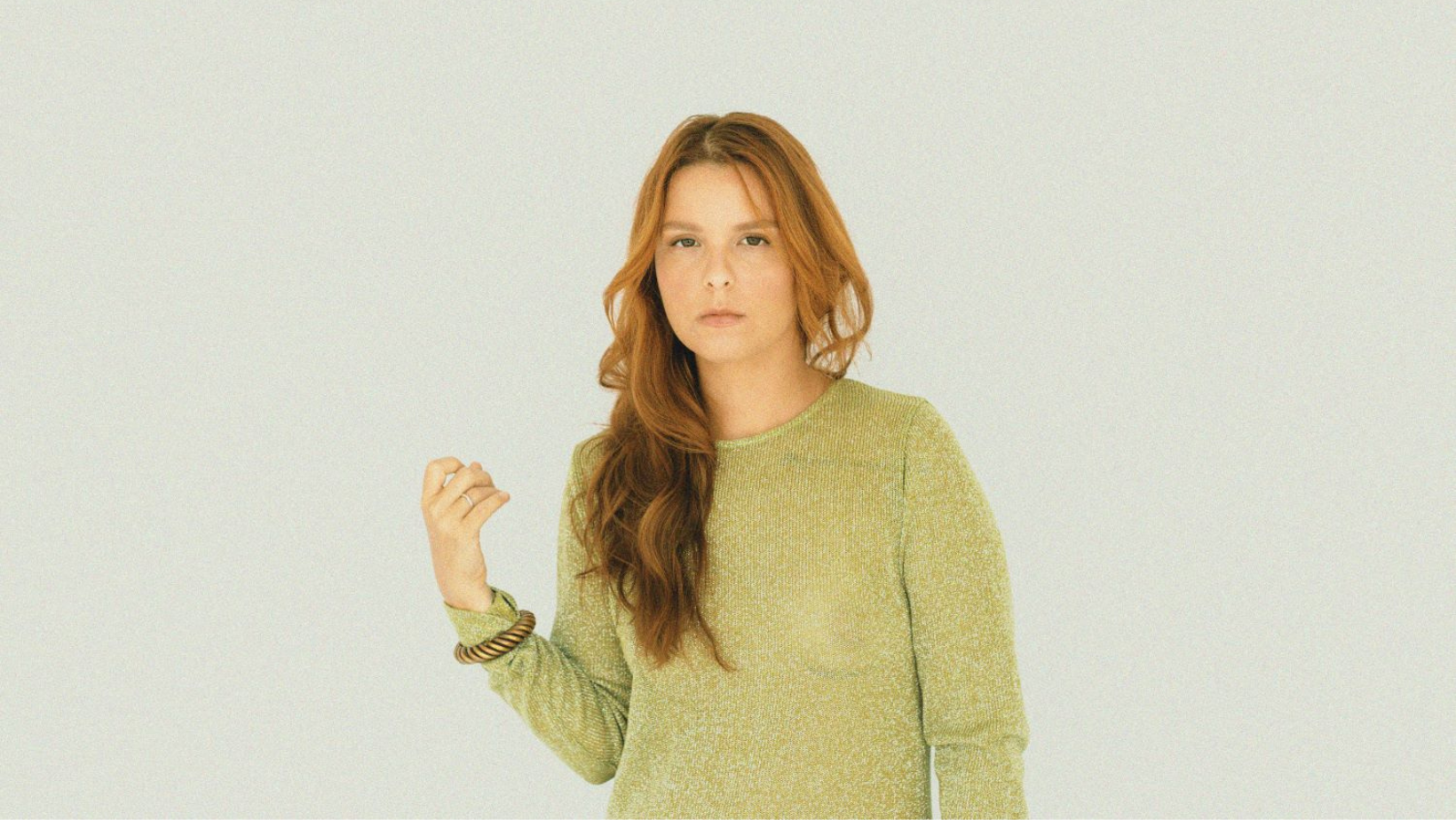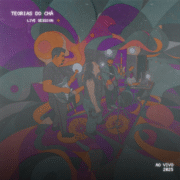
Carioca composer Paula Raia will see her songs performed by one of the biggest names in Brazilian music, Ney Matogrosso, in Focus Cia de Dança’s new show, “Entre a Pele e a Alma”. Premiering at Rio de Janeiro’s Theatro Municipal on June 28, the production marks a new artistic collaboration between Paula and director Alex Neoral, celebrating the choreographer’s 30-year career. Inspired by the work “The Garden of Earthly Delights” by Hieronymus Bosch, the show promises a fusion of music and dance that pays homage to the cultural impact of Ney Matogrosso.
In addition to her work with Focus Cia de Dança, Paula Raia is currently in the studio, preparing her new album. The artist, who has already released a solo album as RAYA and several singles with the duo Tuim, has stood out in the Brazilian music scene, having performed at festivals such as Rock the Mountain and in renowned concert venues such as Solar de Botafogo and Manouche. Her compositions have been performed by prominent names of the new generation, such as Chico Chico, Julia Mestre and Mariana Volker, and her poems were published in the book “It was the wind that brought me here” (Patuá, 2022).
Paula’s next project, “Coisa Nossa”, a collaboration with João Mantuano, will be released by the Toca Discos label in 2024. With this, the artist continues to expand her repertoire and conquer new audiences, consolidating her position as one of the most versatile and creative in contemporary Brazilian music.
How did the opportunity to compose the songs for the show “Entre a pele e a alma” by Focus Cia de Dança come about?
Last year, Alex Neoral, my friend and director of Focus, invited me to write the original score for the show. We had already had the opportunity to work together on another of the company’s shows, called Bichos Dançantes, for which I also provided the soundtrack and musical direction. As we had a good experience in the past, I agreed immediately. And from a year onwards I started to delve deeper into my research for this trail, exchanging references with Alex. It’s a part of the work that I have great pleasure in doing.
How did you feel when you found out that Ney Matogrosso would perform your compositions in the show?
I felt a mix of pleasure and responsibility. After all, the greatest performer in our country – in my opinion – would sing my songs. I hadn’t experienced a moment like this on my road yet. Normally, I compose things for myself to sing, except for songs that other artists have sung along with me. Júlia Mestre, Chico Chico and Mariana Volker. So it’s a different way of thinking about the artistic process. On the other hand, Secos e Molhados and all of Ney’s discography were already deeply rooted within me. This made things easier. I had a sense of what he liked, what could work in his voice.
What were the main inspirations for creating the lyrics of the songs that are part of this new work?
In the process with Alex, we went through several references, the main one being, which is the theme for the development of the show, the work “Jardim das Delitas” by Hieronymus Bosch. It is a triptych, which passes through paradise, earthly life and hell. We go through themes that talk about the flesh, the soul, sins, man, animals, desires and so on. A very important book for this process was The Immoral Soul, by Nilton Bonder, which brings a super interesting perspective on tradition and betrayal and a different look at the soul and transgression.

What was the collaboration process like with Sacha Amback in the musical direction and song arrangements?
I love working together because things that would normally inhabit a terrain already known and safe for me, follow unusual and beautiful paths. This is really cool. Sacha brought a very contemporary look in terms of sound to the show, largely also at the encouragement of Alex himself and I thought that was great. We defined these paths together, discussing ideas over the months, understanding the temperature of each song, where each one was located within the show (hell, garden of delights and paradise). And from then on he started bringing the arrangements and sharing the entire creation process with me as well. We have created a beautiful working and trusting relationship and we will certainly have other work ahead of us. I found a super partner.
You mentioned that Ney Matogrosso represents freedom, sweetness and passion for you. How did these elements influence your compositions?
Sweetness, passion, freedom are elements that, not surprisingly, are part of the narrative of the show itself and are words and feelings that surround my research as well. So the poems were not distant from me, in a way, even if they were not written or thought for me and were placed within a specific context. I worked a lot on the melodies, the rhythmic variations. I brought samba, mpb, gallop, rock, whatever. I gave myself the freedom, within this research, to embrace different genres of music. Looking at Ney’s repertoire, over time, we can see this range of possibilities. He is an interpreter who covers all these genres. I think I was inspired by that too.
What do you admire most about Ney Matogrosso’s work and how was this reflected in your compositions for the show?
The way he sings is very striking. He has a lot of personality. When we hear Ney singing there is no doubt that it is him. He goes from drama to irony, from joy to sadness, from heaviness to lightness, always with great beauty and strength. It’s beautiful to see such a visceral artist. His high notes are still very present today. So I tried to bring melodies that could explore these places in the voice that have been a trademark of his work over all these years.

What was it like working again with Alex Neoral, director of Focus Cia de Dança, and how did he contribute to the creative process?
Working with Alex is a gift for any artist. It is synonymous with working freely, with an open mind. I took things to him, just as he gave me back ready-made choreographies so that I could create them. I took references to him, just as he gave me others back. Books, songs, paintings, ideas. We have a group on WhatsApp just for us to share all these ideas and we have been meeting quite frequently over the last year to polish everything. It was a very fluid process, with extremely generous and welcoming management.
What can audiences expect from “Between the Skin and the Soul” in terms of musical and emotional experience?
The public can expect a mix of very contemporary elements with a lot of poetry. My work is largely based on words and the different sensations that can be generated from them. And sound is nothing more than the manifestation of these possibilities of feeling. You can expect happier, more colorful songs and denser, darker songs. From lightness to density. From sanity to madness. I think everyone can find a little of themselves in what is presented there. After all, we are talking about the flesh, the human being, desires, sins, discoveries, love.
How did Hieronymus Bosch’s work “The Garden of Earthly Delights” influence the creation of the show and its compositions?
As I mentioned before, this work is a triptych that describes the history of the world, divided into three parts: paradise, hell and the pleasures of the flesh. The show, like the work, is also divided into three parts, each with its own atmosphere. It is not a literal representation of the painting. But an inspiration and a question. The songs located in the first part of the show are warmer, harder, straighter. The poetry is a little more pessimistic, until one can reflect and arrive at a sense of collective. The middle part is freer. We talk about sin. Of desire. Of love, of illusion, of greed too. From the dream. Until it can close, in the third part, with a white bird, which is the representation of the free soul. With a more angelic and light melody.
What are your next musical and literary projects, and how has this collaborative experience with Ney Matogrosso and Focus Cia de Dança influenced your future plans?
Since 2022 I have been working on a new project, together with my partner and friend, João Mantuano, called Coisa Nossa. It is a union made by our producers and businesspeople, Felipe Rodarte and Constança Scofield, owners of the Toca Discos label and the legendary Toca do Bandido studio. We recorded an album with 12 original tracks, composed by the two of us, which will be released later this year. This project covers different genres of Brazilian music. It was an opportunity that João and I found together to study the country’s musical diversity. It has been a super rich exercise in composition and research. Regarding the experience with the show entre a Pele e a Alma, it was an incredible experience to be able to position myself as a composer for other singers. I also intend to follow this path of musical direction and soundtrack, composing for other artists, in parallel to my career as a singer. I believe that one thing helps a lot to enhance the other.
Follow Paula Raia on Instagram


